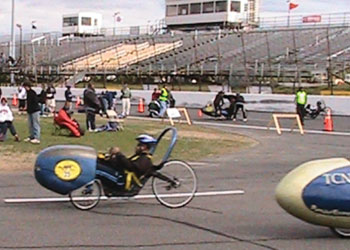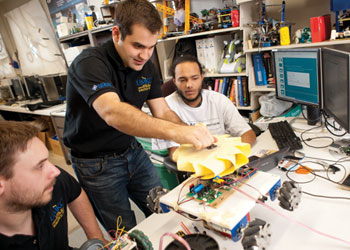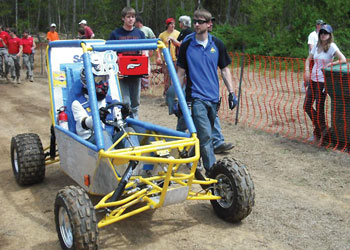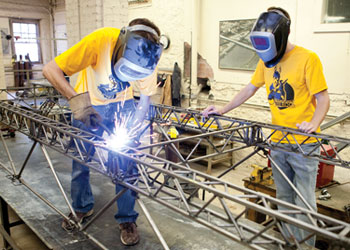by Erick R. Schmidt // Spring 2012

Human Powered Vehicle //
Pedal power
Year established: 2006
Number of students: 6-10
This team creates a highly efficient hybrid vehicle that’s part one-man recumbent bicycle, part bobsled. The pedal-powered contraption is known to get a sideways look or two during testing.
The bad news: The vehicle routinely crashes at speeds of 25 mph or faster.
The good news: The tough, outer shell of the design means crashes make more noise than damage.
50 mph: Top speed
250+: Yearly mileage
40 miles: Distance of final race, split between multiple team members

Robotics //
Short circuit
Year established: 2003
Number of students: 20-25
The robotics team spends months building a robot that incorporates computer programming, engineering prowess and mechanical know-how. This year’s entry comes to life like a mechanical crab, crawling through a pre-programmed walk and lifting cans of soda.
50 lbs.: Competitive weight limit
12 lbs.: UMKC’s robot weight
1 square foot: UMKC’s robot size
75: Percentage of weight made up by the battery and motor
$350: Amount spent every three months on late night snacks
10: Community appearances each year

Baja Buggy //
Bug out!
Year established: 2003
Number of students: 8-15
It may be the university’s most recognizable student project. This off-road racer is designed and fabricated by students putting in more than 20 hours per week, and is judged on speed, maneuverability and towing ability. When its tires aren’t muddy from competition, the buggy maintains a seasonal residence in the Student Union.
350 lbs.: Vehicle weight
4 hours: Length of endurance race (two a year)
2 minutes: Pit stop time during endurance races (switch drivers, clean brakes and refuel)
8: Tires used each year

Steel bridge //
Year established: 1994
Number of students: 5-15
This team designs and fabricates a 20-foot, 200-pound bridge that can withstand loads of 1.5 tons. Talk about team support: That’s more than 200 lbs. for each team member. Following a two-year hiatus, the team returned to action in 2006, winning regionals four consecutive years and winning a national division in 2009.
Big Beam //
Year established: 2003
Number of students: 5
This team forges the largest and heaviest projects. The challenge of building a 15-foot, 1,000-pound-plus concrete beam and calculating its capabilities is so large that the project can’t be transported, so the team captures the entire process on video.
Programming //
Year established: 2007
Number of students: 6
These team members think fast to solve and correct complex problems that would look like Swahili to the layperson. The mathematical magic tests strategy and complex geometry. Don’t forget to show your work!
